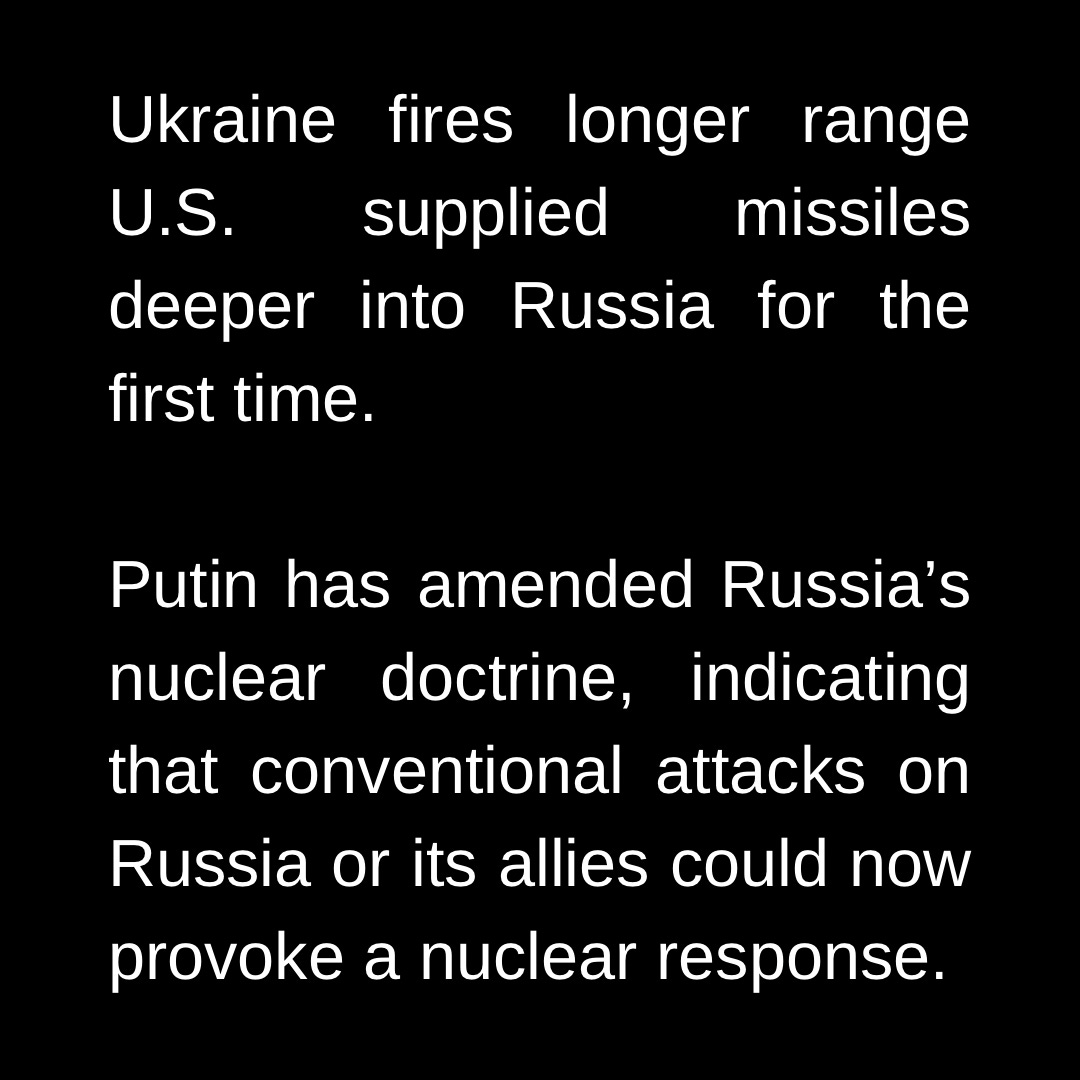Missiles for Democracy: How Biden Plans to Nuke His Way to Peace
The Fallout from Biden’s Missile Diplomacy: Literally
Ukraine has recently utilized U.S.-supplied Army Tactical Missile Systems (ATACMS) to strike a Russian ammunition depot in Bryansk, marking the first use of these long-range missiles against Russian territory.
This action follows President Biden’s authorization for Ukraine to employ such weapons, signifying a notable escalation in the ongoing conflict.
In response, Russian President Vladimir Putin has amended Russia’s nuclear doctrine, indicating that conventional attacks on Russia or its allies could now provoke a nuclear response.
In a move that must have world leaders from Luxembourg to Laos quietly googling “fallout shelters near me,” President Joe Biden has given Ukraine the green light to use U.S.-supplied Army Tactical Missile Systems (ATACMS) on Russian soil.
The target?
A Russian ammunition depot in Bryansk.
The unintended consequence?
Possibly your neighbor’s backyard glowing in the dark.
Let’s set the stage.
For years, global diplomacy has been a game of careful balance, a tightrope walk between asserting strength and avoiding apocalypse.
But why walk when you can sprint headfirst into the abyss?
With the subtlety of a bull in a nuclear reactor, Biden’s decision has not only escalated the conflict but also handed Vladimir Putin the perfect excuse to update his nuclear doctrine.
Because, you know, what’s a little mutual assured destruction between frenemies?
Putin, always the master of understatement, wasted no time in tweaking Russia’s nuclear policy. Now, any “conventional” attack on Russia or its allies could elicit a nuclear response. It’s a policy adjustment that screams, “Don’t try me.”
But sure, let’s poke the bear.
What could possibly go wrong?
Of course, this isn’t just about two leaders playing the world’s most dangerous game of chicken. This is about protecting democracy—or at least, that’s what we’re told.
But in a plot twist worthy of a Hollywood blockbuster, the script now reads like this: democracy is defended by risking thermonuclear war. Someone should really check the fine print on that one.
To be fair, the missiles hit their target—a Russian ammunition depot.
Impressive.
But here’s a question no one seems to be asking: how does this end? Are we betting on Putin deciding, “Eh, let’s let this one slide,” or on the off-chance that he mistakes Biden’s resolve for a misdial?
And while we’re at it, how are those “lines of communication” going? Is anyone in Washington picking up the phone to Moscow, or are we just banking on the idea that mutually assured destruction is a sufficient deterrent? Spoiler alert: it only works until it doesn’t.
Perhaps the most surreal aspect of this geopolitical chess match is the collective shrug from the international community. Remember the outrage when North Korea so much as tested a missile? Apparently, the outrage bar is higher when it’s the U.S. tossing long-range missiles into the mix. After all, when democracy is on the line, the ends justify the means—even if those ends might include global incineration.
But hey, at least we’re consistent. Biden’s administration has long been about making bold moves. Why stop at domestic chaos when you can export it globally?
In the meantime, the rest of us can only watch and hope. Hope that cooler heads prevail, that someone remembers diplomacy isn’t a synonym for escalation, and that Putin doesn’t wake up on the wrong side of the missile silo tomorrow. Until then, maybe it’s time to revisit those Cold War-era civil defense guides.
Duck and cover, anyone?
Source(s)
https://www.wsj.com/world/europe/ukraine-uses-u-s-provided-missiles-in-russia-for-first-time-b624794a?utm_source=chatgpt.com


